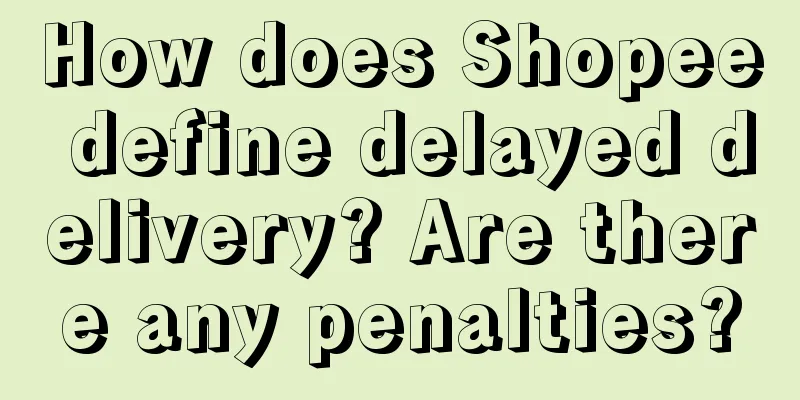How to build a complete user analysis system?

User analysis is something that many people talk about. However, when it comes to implementation, it is often done in a fragmented way. When many novices hear the term "user analysis", they start with a reflexive approach: "gender, age, region, activity, retention, churn, conversion, RFM..." They present a lot of data but have no conclusion. How to make user analysis more systematic? Today, let’s explain it systematically. 1. The biggest difficulty of the user analysis systemWhat is the biggest difficulty in building a user analysis system? Of course: lack of data! There are only three channels for collecting user data:
In terms of collecting user data, ordinary companies cannot compare with monopoly companies like Touteng'a. Large companies have many business lines and collect a wealth of information about various users. In addition, the user stickiness of the apps under large companies is high, so the user behavior data is also very rich. Large companies also like to make recommendations from acquaintances and obtain the relationship between users. As for location information and facial information, they are even more well-controlled. The current situation of most ordinary enterprises is:
This situation means that when ordinary companies conduct user analysis, they must first consider what data they have. They should start from where the data is the richest and most likely to generate value. While conducting analysis, they should also promote business improvement of data, thus achieving a virtuous cycle. Step 1: User value stratificationThe data that all companies must have is: consumption records. Therefore, the first step is to do this. From the consumption records, you can distinguish who are the high-spending users. Identifying the sponsor is the starting point for all subsequent analysis. Note: To identify high-spending users, you don’t simply need to count the amount of spending in the past year. Instead, you need to use a lifecycle observation method to observe the user’s spending distribution from the time they register. Different distribution patterns mean different user operation strategies (as shown in the figure below). Step 2: User source channel analysisAfter understanding who the high-spending users are, we can further think about which channels the high-spending users come from. When analyzing the user source channels, we should first evaluate the channel quality and identify high-quality channels with more high-spending users. Then, we can increase the investment in high-quality channels and reduce the investment in low-quality channels, so as to achieve the goal of reducing costs and increasing efficiency. In this way, even if there is no conversion path data for the time being, we can still do a preliminary analysis. After that, you can gradually promote the business, improve the data collection of the conversion path, analyze the advertising materials, conversion processes, drainage products, drainage activities, etc., and further improve the quality of attracting new customers. Step 3: User Activity AnalysisAfter solving the problem of attracting new users, you can further think about: How active are the existing users? Which group needs help? From the perspective of user operation, users of different levels and different levels of activity have different operation ideas. Therefore, sorting out the user activity stratification is very helpful in forming operation ideas (as shown in the figure below). Many students will get stuck in this step, listing a lot of indicators but not finding any problems. Note: Most companies do not have a super app like WeChat, Taobao, or Douyin. Most users have a low frequency of interaction with companies and are likely to only show up during large-scale events. Only a very small number of users have a high frequency of interaction. Therefore, when analyzing user retention, we must first perform a matrix analysis of the following two factors to gain a clear understanding of the overall situation and identify the right direction to focus our efforts (as shown in the figure below).
Step 4: User Activity Participation AnalysisAfter the first three steps, we have understood three basic issues:
Then you can think about how to increase user value. The best way is to offer discounts, so you can start from here. There are five common types of discounts: buy goods worth XX yuan and get a discount of XX amount.
These five forms of data can be very confusing! Especially when 2-3 discount rules can be used at the same time in the same order. Many companies are very lazy in development. They do not make a separate activity tag library, nor do they make the relationship between the activity table, product table, order table, user table, and point table (commonly known as the five promotion tables). As a result, the final order can only see the discount, and cannot be broken down into each rule. This brings irreparable problems to subsequent analysis. In theory, you need:
This will allow for clear data analysis With these basic data, there is a lot of room for analysis:
Step 5: User contact channel analysisFinally, you can further check: on which platforms the retained users appear, and on which platforms the lost users last appeared. This way, you won’t be like a mourning bird, just chirping: “Users are going to be lost!” Instead, you can give a specific answer: “We can get users back through XX channel.” For traditional enterprises with multiple channels such as stores, mini programs, apps, and e-commerce websites, the first thing to do is to distinguish which users can be reached through online channels. The store channels of traditional enterprises often have serious data gaps. Differentiating online channel users can strengthen private domain operation capabilities and make up for the problem of offline data gaps. If an online company mainly uses APP/Mini Programs, it is mainly to differentiate the content that users are exposed to. It is necessary to distinguish which content (new products? activities? fashion? health? festivals?...) users are interested in, so as to select better content to activate users. 2. Content that is not suitable for priorityCompared with the above five modules, some analysis can be done relatively later:
3. SummaryThe construction of this user analysis system is closely integrated with the data collection process, fully considering: what if there is no data? Promote from the shallow to the deep (as shown below). The idea of building this user analysis system is to think about how to operate users from a business perspective:
This kind of analysis with a strong sense of purpose can solve the problem much better than listing out: "The ratio of men to women is 4:6" and "25-30 years old accounts for 30%". In the process of promoting business, it can also combine operational means and supplement data, and subsequent analysis will become smoother and smoother. Students can try it. Author: Down-to-earth Teacher Chen WeChat public account: Down-to-earth Teacher Chen |
<<: Finding the growth lever has increased my content traffic by more than 100 times
>>: Changing your name can change your brand's fate
Recommend
In 2024, when the private domain is being added, WeChat, Douyin, Xiaohongshu... have created new trends
In 2024, as the cost of public domain traffic cont...
How to write the monthly report for January?
It is the end of January again. January is a speci...
The “A and B” sides of the tea beverage industry: Who is failing? Who is running wild?
The tea beverage industry is facing unprecedented ...
Zheng Qinwen won the championship, and the winners are not only Nike and Bawangchaji|Marketing Observation
Before winning the championship, Zheng Qinwen had ...
How to avoid losses in Pinduoduo
On Pinduoduo, a fiercely competitive e-commerce pl...
Winning BFCM! Here’s a guide to the holiday sprint
Double 11 is coming to an end, and the BFCM that f...
From the first milk tea-adapted animation in history, the growth history of Snow King IP
Mixue Bingcheng uses various marketing methods, la...
What does Amazon's Pan-European program mean and what does it do?
Now many friends will try to open a store on Amazo...
What to do about Amazon storage limits? What are the fees?
After all, Amazon is a cross-border e-commerce pla...
Are there any advantages to Amazon local stores? What are the advantages?
In Amazon, when people open stores, they are gener...
Discussion | How can the public relations department find a sense of presence?
Most small and medium-sized enterprises do not act...
Is it reliable to buy things on Amazon? Can I buy them?
Amazon's products are mostly from overseas. Fo...
What is easy to sell on Shopee Taiwan? What is not easy to sell?
Cross-border e-commerce is a very hot and promisin...
Write an activity review report, this is the best step I have ever seen
Why is writing an activity review report the best ...
With the emergence of dark horse anchors, what growth code does Douyin e-commerce contain?
With the continuous influx of high-quality authors...









